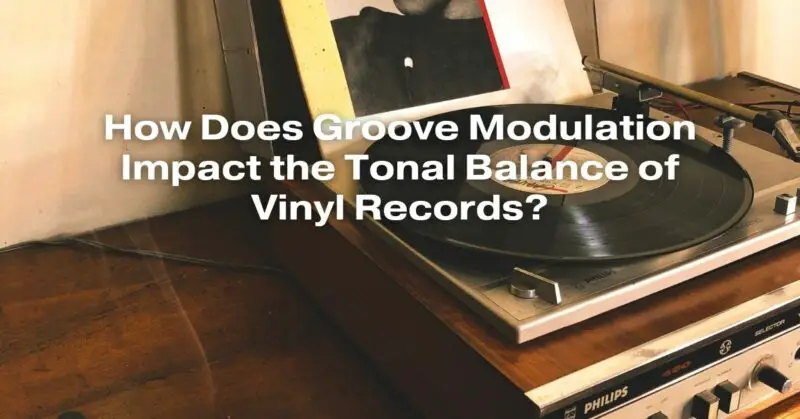In the world of audio technology, vinyl records continue to hold a special place, revered by audiophiles for their warm, rich sound. One crucial element that contributes to the quality of sound in vinyl records is groove modulation. Groove modulation refers to the physical changes in the grooves of a vinyl record, which significantly impact its tonal balance and overall audio quality. In this article, we will explore the intricate relationship between groove modulation and tonal balance in vinyl records.
The Basics of Vinyl Records and Groove Modulation
Vinyl records store audio information in the form of grooves that spiral inward from the outer edge to the center of the disc. These grooves, when played using a stylus, translate the physical imprints into audible sound. Groove modulation, therefore, refers to the variations in the depth, width, and spacing of these grooves. These modulations are directly related to the music’s dynamics, frequencies, and amplitude.
Impact of Groove Modulation on Tonal Balance
1. Frequency Response: Groove modulation affects the frequency response of a vinyl record. The depth of the grooves determines the amplitude of the audio signal. Deeper grooves represent louder sounds, while shallower grooves represent softer sounds. As a result, meticulous modulation is necessary to ensure a balanced representation of all frequencies. Improper modulation can lead to distorted bass or shrill treble, disrupting the overall tonal equilibrium.
2. Dynamic Range: The dynamic range, which is the difference between the softest and loudest sounds in a recording, is influenced by groove modulation. If the grooves are too shallow, the softer sounds may be lost, impacting the subtlety and nuance of the music. Conversely, excessively deep grooves can cause distortion in louder passages, leading to an imbalanced tonal output.
3. High-Frequency Information: High-frequency information is particularly susceptible to the limitations of groove modulation. The spacing between grooves determines how much high-frequency detail can be accurately reproduced. If the grooves are too close together, the stylus might not be able to track high-frequency content accurately, resulting in a loss of brilliance and clarity in the music.
4. Inner Groove Distortion: Inner groove distortion is a common challenge faced by vinyl records. As the stylus moves closer to the center of the record, the linear velocity decreases. This reduction in velocity can impact the accuracy of groove modulation, causing distortion and imbalances in tonal representation, especially in the high frequencies.
Technological Advancements and Groove Modulation
Over the years, advancements in technology have addressed many challenges related to groove modulation. High-quality mastering techniques, precision engineering in stylus design, and improvements in turntable technology have all contributed to enhancing the tonal balance of vinyl records. Additionally, audiophile-grade vinyl records often undergo meticulous mastering processes to ensure optimal groove modulation, resulting in superior tonal quality.
Conclusion
Groove modulation is a critical factor in determining the tonal balance of vinyl records. The delicate interplay between groove depth, width, and spacing directly impacts the representation of frequencies, dynamic range, and high-frequency information. As technology continues to advance, audiophiles can enjoy vinyl records that offer a more accurate and balanced representation of the original recording. The art and science of groove modulation continue to be fundamental in preserving the charm and quality of vinyl records in the modern audio landscape.


